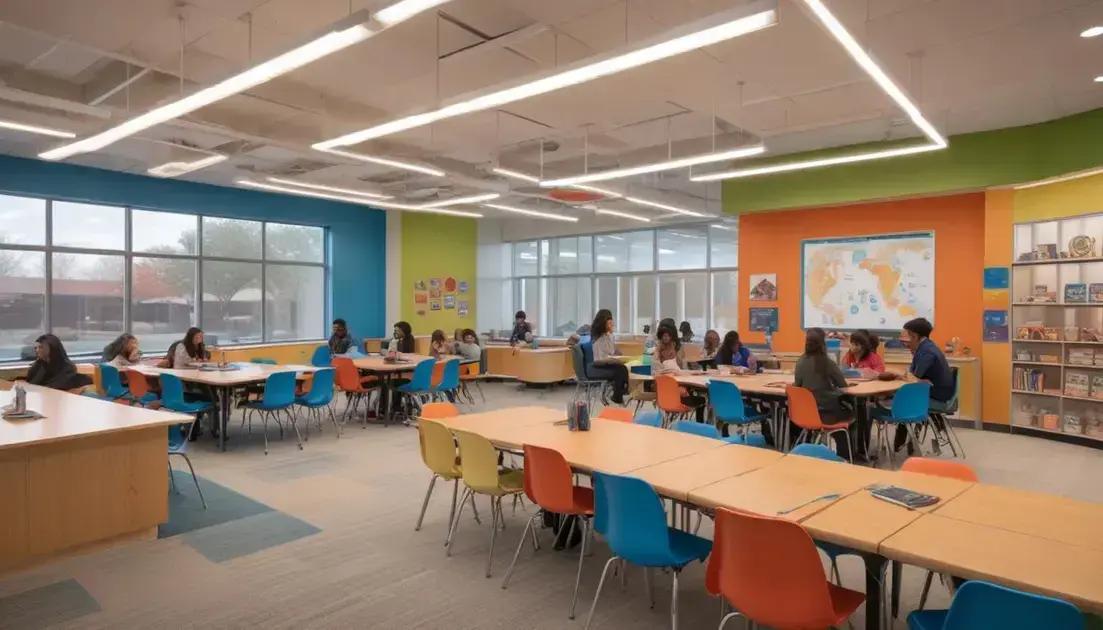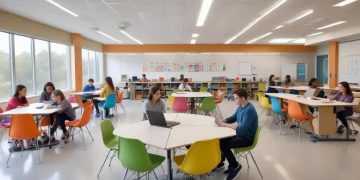School Attendance Challenges: Breaking Barriers for Disadvantaged Students

School attendance for disadvantaged students represents a critical challenge in modern education, where systemic barriers often prevent learners from accessing their full academic potential. Exploring comprehensive solutions can transform educational opportunities and break cycles of educational inequality.
Understanding the root causes of absenteeism
Absenteeism is a complex workplace challenge that goes beyond simple employee absence. Understanding the underlying factors requires a comprehensive analysis of multiple dimensions affecting workforce engagement and well-being.
Psychological and Emotional Triggers
Employee mental health plays a crucial role in workplace attendance. Stress, burnout, depression, and anxiety can significantly contribute to increased absenteeism. When workers feel emotionally overwhelmed, they are more likely to disengage and avoid workplace responsibilities.
Organizational Environment Factors
The workplace culture and management practices directly impact employee motivation and attendance. Poor leadership, lack of recognition, inadequate communication, and limited career development opportunities can create an environment that undermines worker commitment and encourages frequent absences.
Personal Life Challenges
External factors such as family responsibilities, health issues, transportation problems, and personal conflicts can substantially influence an employee’s ability to maintain consistent attendance. These personal challenges often intersect with professional demands, creating complex attendance patterns.
Economic and Structural Influences
Workplace compensation, job security, and overall satisfaction significantly affect absenteeism rates. When employees perceive limited economic opportunities or feel undervalued, they are more likely to disengage and seek alternative employment or reduce their work commitment.
Comprehensive strategies addressing these multifaceted root causes can help organizations develop more effective attendance management approaches.
Socioeconomic barriers to consistent school participation
Students from disadvantaged backgrounds often face significant challenges that impede their educational journey. These barriers extend far beyond academic capabilities, creating complex obstacles to consistent school participation.
Economic Constraints
Poverty directly impacts a student’s ability to engage in education. Many families struggle with basic expenses like transportation, school supplies, and appropriate clothing. Financial hardship often forces students to work part-time jobs or care for younger siblings, significantly reducing their available time for academic pursuits.
Family Dynamics and Support Structures
Unstable home environments contribute substantially to school absenteeism. Children from single-parent households, families experiencing frequent relocations, or those dealing with chronic unemployment frequently encounter disrupted educational experiences. Limited parental educational background can also diminish understanding of education’s long-term value.
Healthcare and Nutrition Challenges
Access to consistent healthcare and proper nutrition creates additional barriers. Students suffering from untreated medical conditions, lacking regular health screenings, or experiencing food insecurity struggle to maintain regular school attendance. These physical limitations directly impact cognitive performance and engagement.
Community and Infrastructural Limitations
Geographic isolation, inadequate public transportation, and limited educational resources in low-income neighborhoods further complicate school participation. Rural and urban marginalized communities often lack the infrastructure to support consistent student engagement, creating systemic educational disparities.
Addressing these multifaceted socioeconomic barriers requires comprehensive, holistic interventions targeting individual, familial, and community-level challenges.
Mental health impact on student attendance
Mental health significantly influences students’ ability to consistently engage in educational environments, creating complex challenges that extend beyond traditional academic barriers.
Anxiety and Academic Performance
Generalized anxiety disorder can dramatically reduce a student’s school participation. Students experiencing persistent anxiety symptoms often struggle with social interactions, classroom presentations, and daily academic expectations. These psychological barriers can lead to increased absenteeism and reduced academic performance.
Depression’s Profound Educational Impact
Clinical depression transforms academic engagement into an overwhelming challenge. Students battling depressive episodes frequently experience extreme fatigue, loss of motivation, and diminished cognitive functioning. These symptoms directly correlate with increased school absences and potential academic disengagement.
Stress-Related Psychological Barriers
Academic pressure, social dynamics, and developmental transitions create significant stress for students. Chronic stress can manifest as physical symptoms, including headaches, sleep disruptions, and immune system challenges, further compromising educational participation.
Neurodevelopmental Considerations
Conditions like ADHD, autism spectrum disorders, and other neurodevelopmental differences can intensify mental health challenges. These students often require specialized support structures to maintain consistent school attendance and effectively manage their educational journey.
Understanding the intricate relationship between mental health and school participation demands comprehensive, compassionate intervention strategies.
Innovative support programs for at-risk students
Educational institutions are developing comprehensive strategies to support students facing multiple challenges, recognizing that traditional approaches often fail to address complex systemic barriers.
Mentorship and Personalized Guidance Programs
Targeted mentorship initiatives create critical support networks for at-risk students. One-on-one coaching helps students develop academic skills, emotional resilience, and long-term educational goals. Professional mentors provide personalized guidance, helping students navigate personal and academic challenges.
Holistic Intervention Strategies
Comprehensive support programs integrate multiple intervention approaches. These include academic tutoring, mental health counseling, family engagement workshops, and career development resources. By addressing interconnected challenges, schools can create more effective support ecosystems.
Technology-Enhanced Learning Support
Digital platforms now offer personalized learning experiences tailored to individual student needs. Adaptive learning technologies can identify knowledge gaps, provide customized learning pathways, and offer real-time academic support. These tools help students who might otherwise fall behind in traditional classroom settings.
Community and Resource Collaboration
Successful intervention programs often involve partnerships between schools, local businesses, social services, and community organizations. These collaborative models create comprehensive support networks that extend beyond traditional educational boundaries, providing holistic assistance to students facing complex challenges.
Innovative approaches demonstrate that targeted, compassionate support can transform educational outcomes for vulnerable student populations.
Role of community resources in educational engagement

Community resources play a transformative role in supporting educational engagement, creating robust networks that extend learning beyond traditional classroom boundaries.
Local Library and Learning Centers
Public libraries provide critical educational support through free resources, digital learning platforms, and structured study programs. These community spaces offer homework assistance, technology access, and supplemental educational materials for students from diverse socioeconomic backgrounds.
Community Organization Partnerships
Non-profit organizations develop targeted programs addressing specific educational challenges. These initiatives range from after-school tutoring to mentorship programs, creating supportive environments that help students overcome academic and personal barriers.
Technology and Digital Resource Access
Community centers and local organizations bridge digital divide challenges by providing computer labs, internet access, and technology training. These resources are particularly crucial for students lacking technological infrastructure at home, ensuring equal learning opportunities.
Youth Development and Skill-Building Programs
Community-driven initiatives focus on holistic skill development, offering workshops in leadership, communication, vocational training, and personal development. These programs complement traditional academic education by providing practical life skills and career readiness resources.
Strategic community engagement transforms educational landscapes by creating comprehensive support ecosystems for students.
Technology and personalized learning interventions
Modern educational technologies are revolutionizing personalized learning experiences, creating adaptive and responsive educational environments tailored to individual student needs.
Adaptive Learning Platforms
Sophisticated software now tracks student performance, identifying knowledge gaps and learning patterns with unprecedented precision. These platforms dynamically adjust content difficulty, providing customized learning pathways that match each student’s cognitive abilities and learning pace.
Artificial Intelligence in Education
AI-powered educational tools analyze student interactions, offering real-time feedback and personalized recommendations. Machine learning algorithms can predict potential academic challenges, enabling proactive intervention strategies that support students before they fall behind.
Digital Assessment Technologies
Advanced diagnostic tools go beyond traditional testing, measuring not just academic performance but also learning styles, emotional engagement, and cognitive development. These technologies provide comprehensive insights that help educators design more effective, individualized learning experiences.
Interactive Learning Environments
Gamification and immersive technologies transform educational engagement. Virtual reality, interactive simulations, and adaptive learning games create dynamic environments that make learning more engaging, personalized, and aligned with students’ intrinsic motivations.
Technological innovations are reshaping educational approaches, moving beyond one-size-fits-all models toward truly personalized learning experiences.
Family engagement strategies for improved attendance
Effective family engagement transforms student attendance patterns by creating supportive, collaborative educational ecosystems that extend beyond traditional school environments.
Communication and Relationship Building
Schools develop proactive communication strategies that build trust and transparency with families. Regular, multilingual updates, personalized outreach, and accessible communication channels help parents understand their critical role in student attendance and academic success.
Home Support Workshops
Targeted family workshops provide practical skills and resources for creating supportive home learning environments. These sessions address challenges like homework support, establishing consistent routines, and understanding the importance of regular school participation.
Technology-Enhanced Parent Involvement
Digital platforms now enable real-time tracking of student attendance, academic progress, and engagement. Mobile apps and online portals make it easier for parents to stay informed and actively participate in their child’s educational journey.
Cultural and Contextual Sensitivity
Engagement strategies recognize diverse family structures and cultural backgrounds. Culturally responsive approaches respect family dynamics, economic challenges, and unique communication preferences, ensuring inclusive and effective support systems.
Comprehensive family engagement transforms educational outcomes by creating collaborative partnerships between schools, students, and families.
Measuring and tracking attendance improvement outcomes
Strategic data collection and analysis provide critical insights into attendance patterns, enabling educational institutions to develop targeted intervention strategies.
Comprehensive Tracking Metrics
Advanced tracking systems go beyond simple absence counts, measuring complex attendance patterns such as chronic absenteeism, tardiness frequency, and conditional participation. These nuanced metrics help identify underlying factors affecting student engagement.
Data-Driven Intervention Strategies
Sophisticated analytics platforms correlate attendance data with academic performance, socioeconomic indicators, and behavioral patterns. This holistic approach allows educators to design personalized support interventions based on individual student needs.
Performance Benchmarking
Schools now use comparative data analysis to evaluate intervention effectiveness, comparing attendance improvement rates across different programs, demographic groups, and implementation strategies. These benchmarks help refine and optimize attendance support approaches.
Longitudinal Impact Assessment
Long-term tracking monitors how attendance improvements correlate with broader educational outcomes, including graduation rates, academic achievement, and future career preparedness. This comprehensive perspective demonstrates the systemic impact of targeted attendance strategies.
Robust measurement frameworks transform attendance challenges into opportunities for strategic educational improvement.
Transforming Educational Engagement: A Holistic Approach
Addressing student attendance challenges requires a multifaceted strategy that integrates technology, community support, and personalized interventions. No single solution can resolve complex educational barriers.
By combining innovative support programs, mental health resources, technology-enhanced learning, and family engagement, educational institutions can create comprehensive ecosystems that support student success.
Key Transformation Strategies
Successful attendance improvement depends on:
- Comprehensive data tracking
- Personalized intervention approaches
- Community and family collaboration
- Technology-driven support systems
The future of education lies in understanding individual student needs and creating adaptive, supportive environments that empower learners to overcome challenges and achieve their full potential.
Continuous innovation, empathy, and strategic implementation are crucial in developing effective attendance improvement frameworks.





